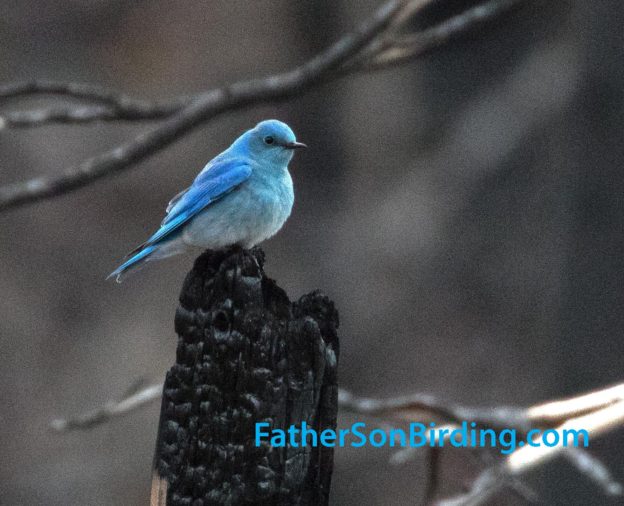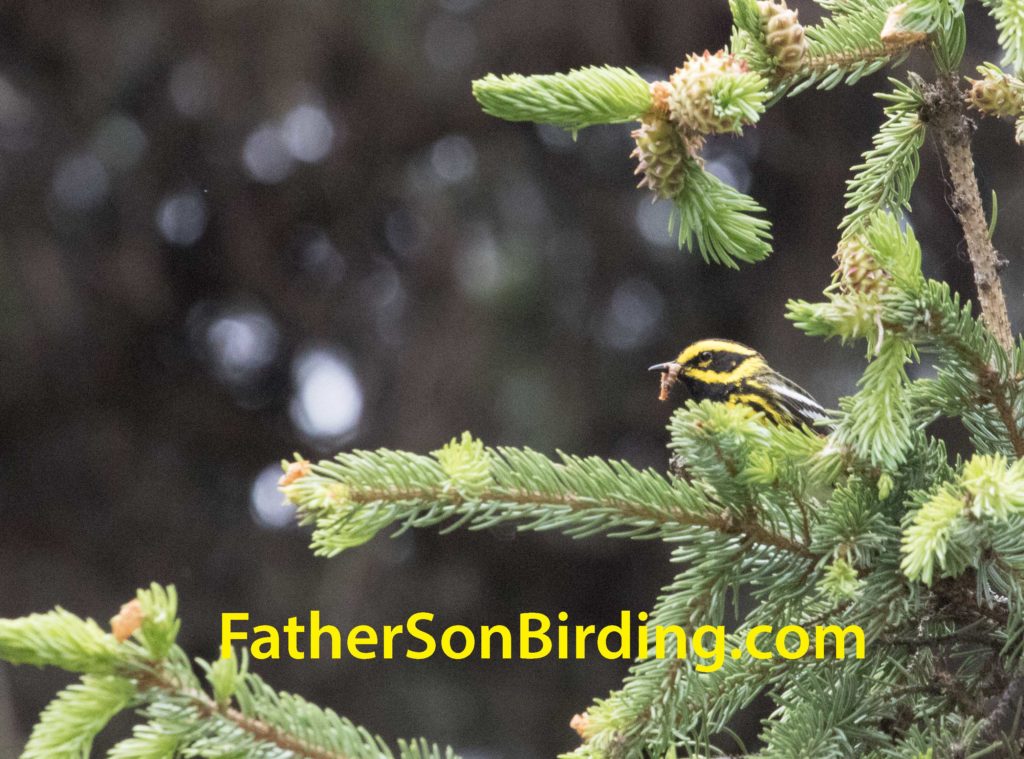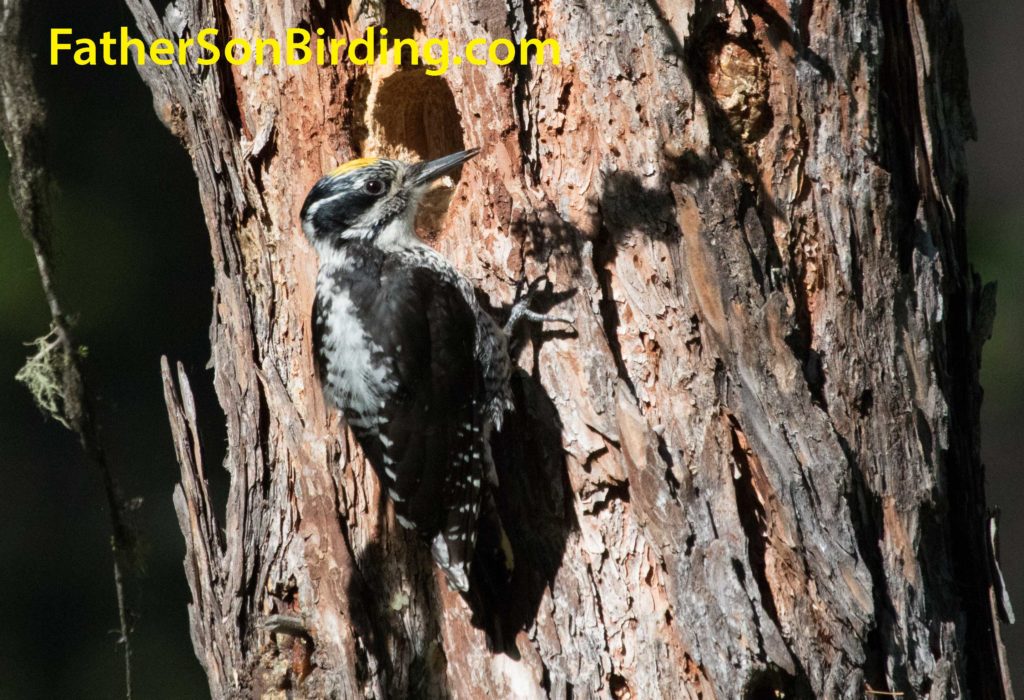If you’ve followed our blog, you’ve probably realized that some of our favorite places to bird are recent burn areas—that is, burn areas that have not been destroyed by so-called “salvage logging.” I first fell in love with burn areas while researching my book Fire Birds—Valuing Natural Wildfires and Burned Forests. The book highlighted the fascinating work of biologist Dick Hutto, who showed what vital habitat burned forests are for more than one hundred bird species. Yesterday, after dropping Braden off for a Boy Scout leadership weekend near Seeley Lake, I decided to hit a burn area we’d visited with Dick last spring—the Morrell Creek watershed.
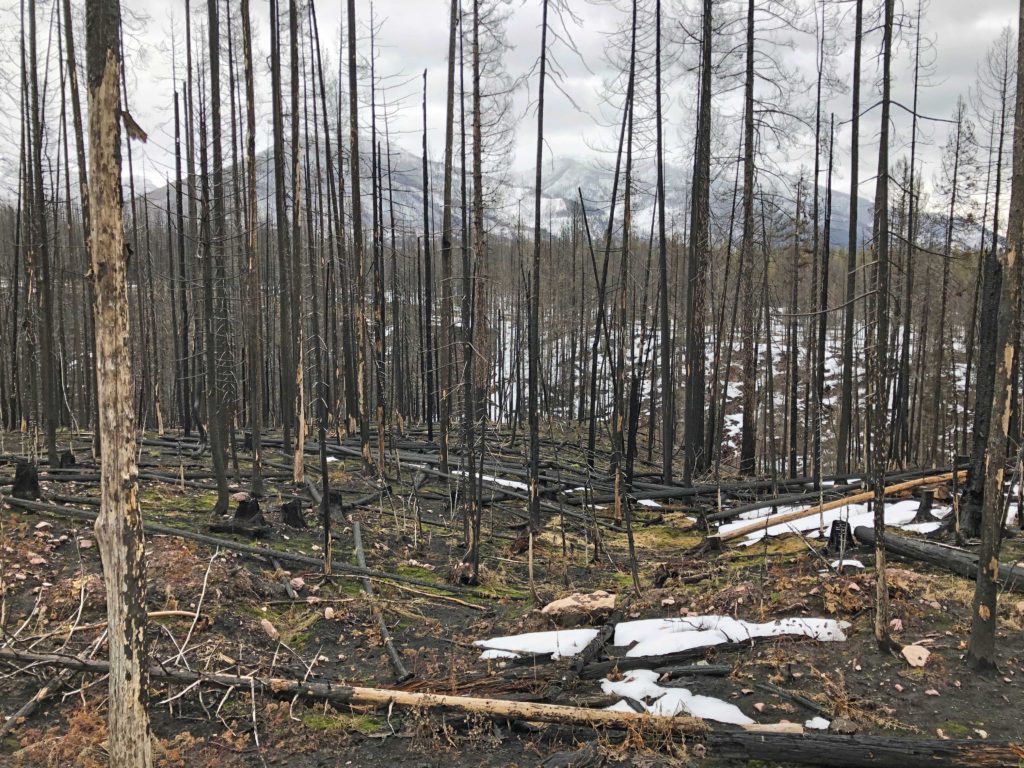
I had two ulterior motives for going there. One was to scout out a good place to bird with some kids next month. The other was to see one of Braden’s and my favorite birds, the Black-backed Woodpecker. As I was driving in, I was dismayed to find that the “salvage loggers” had already ruined a lot of the habitat along the road, but I eventually pulled over at a likely place to explore, one with larger-diameter dead trees still left standing.
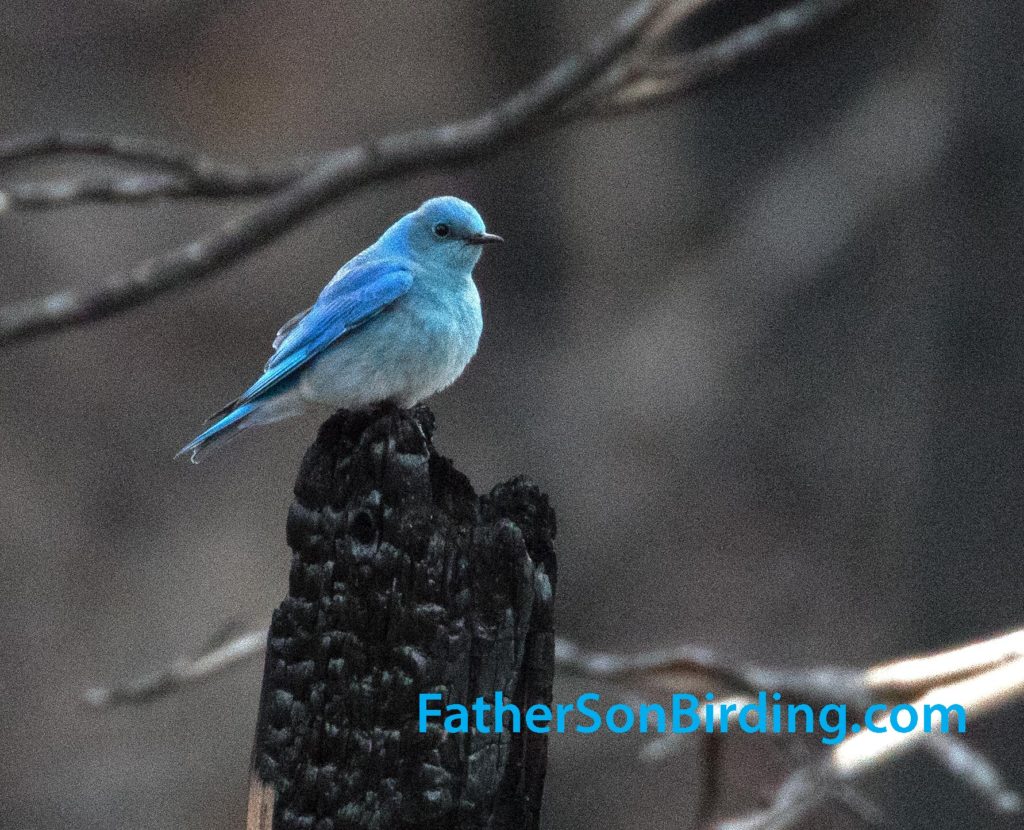
Right off the bat, I encountered large numbers of two favorite burn species: Mountain Bluebirds and Dark-eyed juncos, who seem to prefer burn areas to almost any other habitat. The bluebirds especially were going crazy. Twice, I saw groups of three (two males and a female, I think) chasing and mobbing each other, sometimes driving themselves to the ground. A territorial dispute? The birding equivalent of a bar fight over a girl? I wondered.
It didn’t take too long for me to hear woodpecker drumming and my heart raced as I hurried through the trees hoping to see a Black-backed. Unfortunately, I didn’t see the woodpecker until it was too late and spooked it before I got a good ID. Curses!
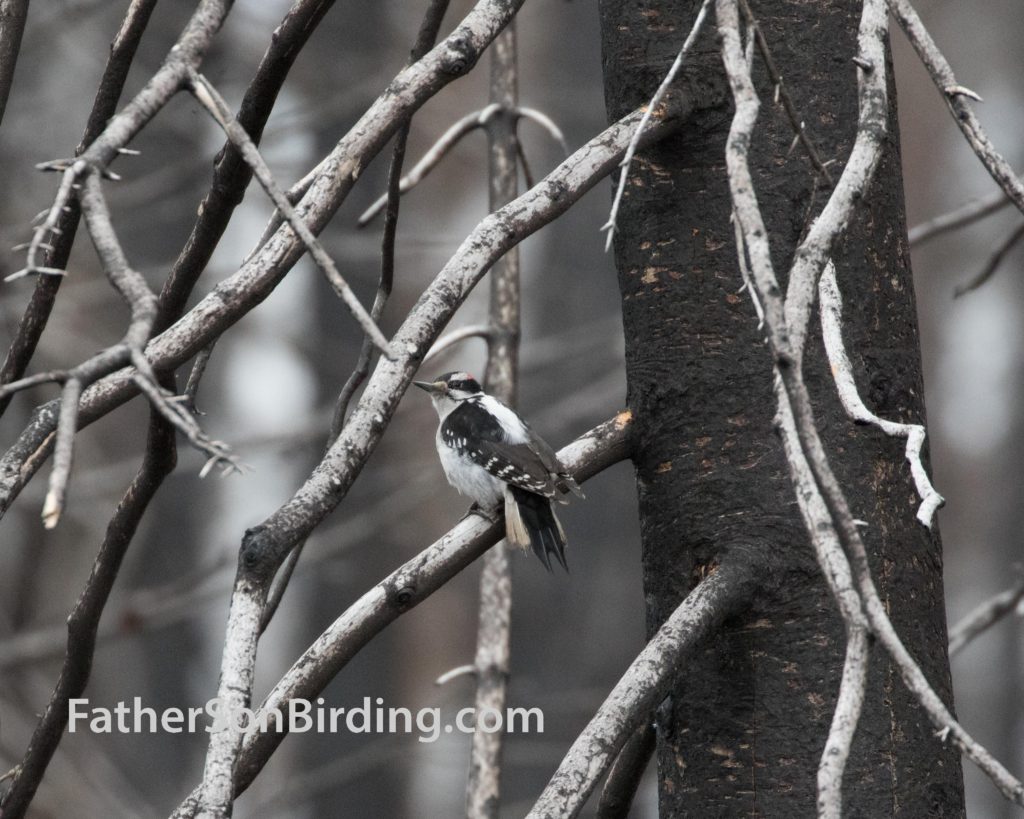
I kept walking through the forest, finding a great sense of peace from the sounds of Morrell Creek splashing below and from the dark, silent sentries surrounding me. Eventually I located another woodpecker drumming, but only snatched two blurry photos of it before it, too, flew away. My photos, though, did show a yellow crown, narrowing the bird to a Black-backed or Three-toed Woodpecker. Unfortunately, it was a crummy day for light and photography and the next woodpecker I saw was too backlit for me to identify. I did see a Golden Eagle circling above and an American Dipper in the creek below. A Hairy Woodpecker also posed for a picture. Finally, as I was about to leave, I heard more drumming. I grabbed my camera from the car seat and chased it down.
Success!
On a high narrow snag sat a beautiful male Three-toed Woodpecker drumming his heart out. It wasn’t a Black-backed, but I didn’t care. Three-toed Woodpeckers, like Black-backeds, are specialists of burned forests and I was delighted to meet up with this fellow—and even more delighted that he’d found a beautiful, blackened home.


